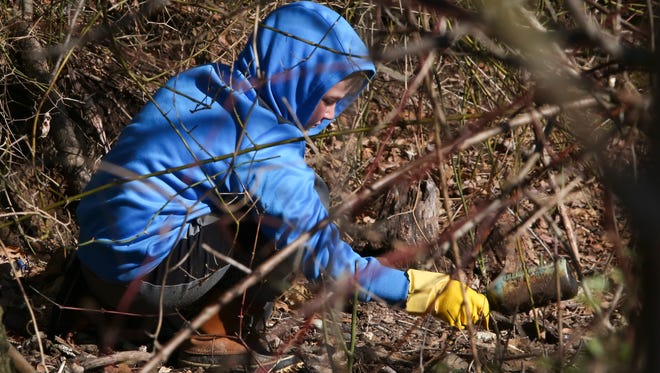Survey: Chesapeake Bay blue crab numbers down





Blue crab numbers dropped by nearly one-fifth this year in the Chesapeake Bay, according to a new survey that presents a mixed outlook for the key crustacean.
“The big picture is the stock overall is in pretty good shape,’’ said John Bull, head of the Virginia Marine Resources Commission. “This year’s harvest should be substantial, and consumers should find plenty of tasty crabs for the dinner table."
But he added that obstacles remain, suggesting that regulators should remain conservative with the catch limits they set for the commercial crabbing industry.
The Maryland Department of Natural Resources and Virginia Institute of Marine Science have partnered since 1990 on annual winter surveys of the blue crab in the Chesapeake Bay. In all, they estimated this year's population at 455 million, down 18 percent from 2016.
Still, that total represented the 11th-highest amount in the history of the survey.

A scientist with the Chesapeake Bay Foundation called the results a "mixed bag."
"But they show a continuing positive trend overall for the health of the Chesapeake Bay blue crab," Chris Moore said.
Watermen should have no trouble filling their crab pots during the first half of this year's harvest because female crabs abound, the survey showed. The female stock increased 31 percent to a record high of 254 million crabs. While female stock is an indicator of future population, females are usually not eating crabs.
A healthy number of spawning-age female crabs is a considered crucial for the future of the species.
But troubles await during the second half of the season — from August onward. At that point, this year's juvenile crabs are expected to be large enough for keeping, but their numbers slipped 54 percent to the fourth-lowest total on record, the survey found.
BACKGROUND: Trump administration budget suggests nixing federal money for Chesapeake Bay restoration
Scientists attribute the decrease to natural fluctuations — unfavorable winds, currents, temperature and crab-on-crab cannibalism.
In the past, such changes have wreaked havoc on juvenile crabs. The amount of juveniles plummeted from 581 million in 2012 to 111 million the following year because of just such environmental factors, officials say.
Pat Reese, owner of Southern Connection Seafood in Crisfield, said he isn't surprised by the ups and downs highlighted in the report. Seafood harvesting is as cyclical as nature itself, he said.
As for the rest of the report, he doesn't put much faith in anything the government has to say. Regulations have ground down the industry into a handful of fishermen and seafood companies that can weather the whims of politics, Reese said.
“They’ll make a regulation, and four years later, the species will come back and they’ll take all the credit for it," he said.
The annual survey often guides state fishery managers' decisions — and that seems to be the case this year, too.
The downturn in juveniles "appears to preclude" the reopening of the winter dredge season in Virginia, state officials said in a press release. Winter dredging has been closed since 2008 despite repeated calls from the seafood industry to reopen it.
Maryland officials said the survey results suggest maintaining the course with existing regulations. The state's Blue Crab Industry Advisory Committee and Tidal Fisheries Advisory Commission are expected to review its findings soon and recommend changes if any are deemed necessary.
Beginning in 2008, Maryland and Virginia reduced the limit on the number of female crabs that could be harvested and ended the winter dredge fishery, among other actions. The lower number of juvenile crabs suggest those regulations need to stay in place, Moore said.
Three years ago, officials in both states, as well as the Potomac River Fisheries Commission, implemented a 10 percent crab harvest cut to aid in the rebound of adult female crabs. This year's surge suggests that cut was the right call, Bull said.
“We are out of that danger zone, due to adaptive and effective management of this fishery. The spawning stock is in solid shape, but more work needs to be done," he said.
Last year's total commercial catch of nearly 60 million pounds represented a 20 percent jump over the previous year and the third increase in three years. Since 2014, the annual harvest has gone up 71 percent while overall crab abundance has risen 53 percent, officials say.
"We seem to be on the right track," said Rom Lipcius, a professor at the Virginia Institute of Marine Science.
Crab season began April 1 and continues until Dec. 15.
Moore also called for maintaining funding for federal crab management programs, including underwater grass restoration efforts. The Trump administration's proposed budget, released last month, recommended eliminating the $73 million federal share of the Chesapeake cleanup program.